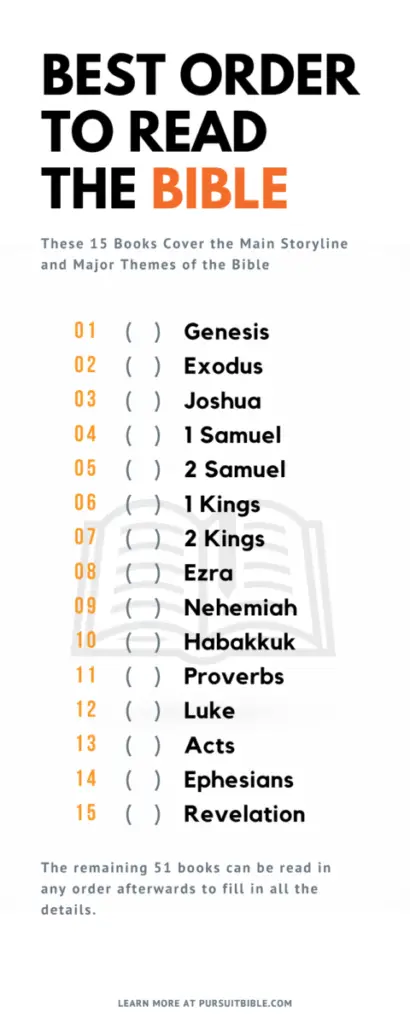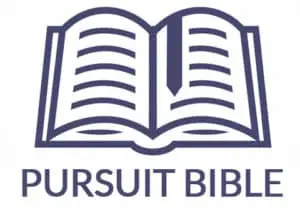
If you’re just beginning to explore Christianity or reading the Bible for the first time, it can be confusing to know where to start. Here are 5 steps covering all the basics from choosing a Bible, to where to start reading, with several tips and resources for those who are new to the Bible.
If you’re looking for a good place in the Bible to start reading, I recommend the book of Mark, which is the 2nd book in the New Testament. Sometimes, it’s called the Gospel of Mark or the Gospel According to Mark. It’s the shortest of the Gospels, explains the main points of the ministry of Jesus and what He came to do.
New to the Bible: Where to Start
- Choose a Bible with a Modern Translation
- Choose a Book of the Bible to Read
- Use a Simple Bible Study Method
- Make Use of Bible Study Resources
- Be Open to Receiving Help
1. Choose a Bible with a Modern Translation
Since the Bible was originally written mostly in Hebrew and Greek, you’ll want to get an English translation. I remember going to the bookstore years ago to purchase my first Bible. I was shocked to see an entire wall full of shelves with 100’s of different types of Bibles to choose from!
Look for a relatively modern translation of the Bible that’s easy to understand, like the ESV (English Standard Version). Some churches and Bible Studies have a translation that they recommend. If they have one, you can go with that one.
Tip: A widely distributed translation is the King James Version, but most people find that its 17th Century English is difficult to understand. Stick with a modern translation like the ESV if you can.
If this is your first Bible, look for a solid, no-frills one like the ESV Personal Reference Bible (link to Amazon – opens in a new window). It’s a great choice for anyone. It has a few basic tools to help, but not so many things that it distracts from the text of the Bible itself.
If you’re looking for a version that’s easier to read, I recommend getting the NLT translation (Link to Amazon).
Tip: Some of the less expensive Bibles have really thin pages and the letters on the other side bleed through making it difficult to read.
Some people like to get what’s called a Study Bible. More on those later, but it’s basically an all-in-one Bible study tool.
If you’re reading the Bible for the first time, I would recommend getting a printed copy of the Bible because it’s easier to get a sense of the layout of where the books of the Bible are.
If you prefer a digital version of the Bible, here are 2 good options, both of which are free:
- A good place to read the Bible online is esv.org.
- For iPhone or Android, I use the ESV Bible because it’s simple, elegant and straightforward.
2. Choose a Book of the Bible to Read
The next step is to choose a book of the Bible to read. The Bible is actually a collection of 66 books written by a variety of authors (around 40) over a period of 1600 years in various places and includes many literary genres.
Most printed Bibles will have a Table of Contents towards the front of the book so you can find the order of the books and what page to turn to find each book. The books are not arranged in strict chronological order, so you don’t have to read them in order.
Some books of the Bible are easier to start off with than others. For some of the books, a little bit of historical background can go a long way in understanding what’s going on. I’ll talk more about that below.
Tip: Over the years, I’ve found that the best place in the Bible to start reading for many people is either the book of Genesis or the book of Mark.
Genesis is the first book of the Old Testament and the first book of the Bible. It starts with the beginning of the universe, how mankind decided not to follow God’s way, and the plan God sets in place to restore the world.
Genesis sets up the rest of the Bible and describes how God chose one nation to start the process of saving mankind and to bless all the nations of the world.
Mark is the second book of the New Testament and explains who Jesus is, why He came, what His message was, how He lived, and ultimately, why He died and rose from the dead.
To find out why the Gospel of Mark is recommended, you can read this article.
You really can’t go wrong with starting with either one of those two books.
If you want to read more after those, here are the 15 books of the Bible that I recommend to get an effective overview of the entire Bible. They’re from the article: What is the Best Order to Read the Bible for Beginners? (link opens in a new window).

3. Use a Simple Bible Study Method
In order to get the most out of reading the Bible, it’s good to have a simple Bible Study method. There are a lot of ways to read and study the Bible. The Sword Method is a great way to start. It’s a simple yet helpful way to think more deeply about what the Bible is saying.
| THE SWORD METHOD OF BIBLE STUDY |
|---|
| After reading a portion of the Bible (whether a short or long passage) ask these 3 questions: |
| 1. What does this passage say about God, Jesus, or the Holy Spirit? |
| 2. What does this passage say about Man (myself or others)? |
| 3. What does God want me to do according to this passage? |
Not every passage of Scripture will deal with all 3 of these questions, so you can just answer the ones that apply.
Many people find it helpful to write down their thoughts or answers to any of the questions in a notebook or journal. I also like to write down any questions that I might have of things I don’t understand or things that I’d like to find out more about in the future.
4. Make Use of Bible Study Resources
People have been writing about the Bible and its teachings for many years. There are so many resources online and in print. I’ll only mention 2 Bible resources here because they are simple, straight-forward and perfect for those who are just starting out.
What’s popularly known as a Study Bible is a number of resources and tools bundled with the text of the Bible. Most Study Bibles include a simple commentary below the text of the Bible, cross-references to other sections of the Bible on the same topic, a Bible handbook-type introductions to each of the books of the Bible, maps, and charts, etc.
There are all kinds of Study Bibles imaginable. You’ll see what I mean if you start searching for one! I recommend the CSB Tony Evans Study Bible (link to Amazon) if you want to dive a little deeper into Bible Study and understand its meaning.
Tip: If you ever get stuck on what something means, looking at other translations of the Bible can also be helpful.
Some other popular ones besides the ESV are the NLT (New Living Translation), and the NKJV (New King James Version). All of these and many more translations are available on websites like Biblegateway.com
5. Be Open to Receiving Help
In other words, pray. If you’re just starting to explore the Bible and have questions about faith, it might feel awkward at first. But, if you’re reading a book that claims to be the Word of God (2 Tim. 3:16), why not ask God to help you?
You will seek me and find me, when you seek me with all your heart.
(Jeremiah 29:13)
Simply say to God: “Speak to me through Your Word, the Bible. Open my heart and my mind so I can know you more.” The Bible has sparked faith, brought comfort, stirred courage, and given hope to countless people throughout the ages whose lives have been changed.
So those are the 5 steps to help you get started. I’m confident it’ll put you on track to a great start to which I hope will be many hours of encountering the wisdom and heart of God. Happy reading!
Don’t sweat the details. The Bible is a long book and some parts of it are more difficult to understand and require some background information. The main message of the Bible is actually quite straightforward once you step back and see the flow of the entire book. It’ll come with time.
Subscribe to my newsletter for updates and encouraging content.
| If you want to know more about how the Bible is organized, read this article: How the Bible is Arranged: The Main Structure and Its Meaning. |
Photo Credit:
Photo by Priscilla Du Preez on Unsplash
